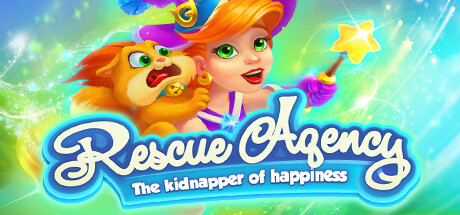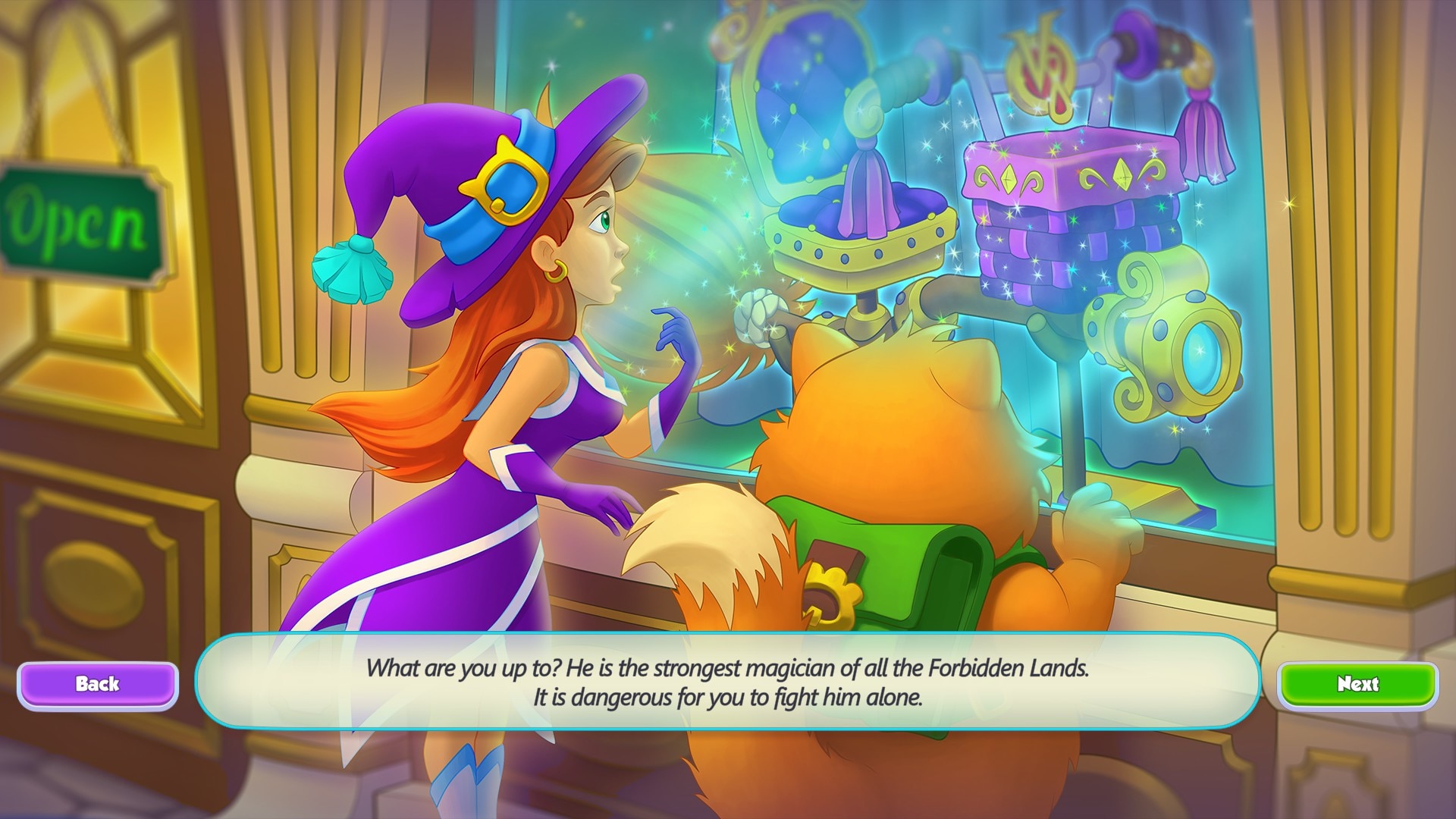
Rescue Agency: The Kidnapper of happiness
Rescue Agency: The Kidnapper of happiness is likely one of the more complex and lengthy time management games on Steam. Built in the vein of the 12 Labours of Hercules series (published by a different studio), it borrows the staple mechanics of the genre but manages to stand out through a few new features that are not commonly present among similar games.

In Rescue Agency: The Kidnapper of happiness you take the role of Iris, a good witch who tries to protect the magical world of Abonda from the mischief caused by the powerful wizard known as the “Kidnapper of Happiness”. The gameplay takes the form of completing several sequential missions in which Iris, together with her ginger companion cat Morty and an army of helper cats, will try to restore the balance of their world by purging out the evil entities that invaded their land, finding lost artifacts and fixing what is broken. There are in total 25 main missions and an additional five bonus ones that are unlocked after the main game is completed. Each of them will have you collect resources, build or repair production buildings, send various allied heroes to perform certain tasks and remove the obstacles that block their advance.

Each mission has a specific set of objectives, of which some are mandatory while others are optional. Some of these objectives are timed, but not completing them before their deadline will generate only a mild decrease in the overall score for that mission. What I find particularly nice about the game is that the main objectives together with their current progress are tracked in a hotbar at the bottom of the screen. These are updated as you complete them, with new ones replacing the finished ones or being added as soon as they are triggered by your actions. Overall they’re meant to be used as a rough guide of what the optimal order of your moves should be. Since these games usually tend to have several branches on one map (you can go in multiple directions), it’s always useful to know which of the sides should be prioritized, and the order in which the objectives are listed at the bottom of the screen mostly gives you a good idea about that. Additionally, there’s an in-depth guide for each level accessible from the settings menu. It contains a numbered list of steps (including what to build and when to build / pick up a certain item) correlated with their locations on the map, describing the optimal order for completing all the objectives.

In comparison to other similar games, the building mechanic in Rescue Agency: The Kidnapper of happiness is heavily used and the gameplay relies strongly on it. In terms of level design, the missions start with a set of buildings that you need to repair, but clearing out a small area of resources will also allow you to build one of the many possible buildings in that spot. You will need not only production facilities (sawmill for wood, bistro for food, etc.), but also houses for your specialized heroes, mandatory for completing the mission’s objectives: a pyrotechnician that can pick up dangerous objects, a doctor that can cure illnesses, etc. With levels considerably larger than usual (each taking 20-30 mins to complete), you will spend a lot of time building all these or even destroying them in order to build something else in their place, depending on what kind of resources you need the most. The production buildings can be upgraded once for some extra income, but regardless of their level, they will use only one of your cat helpers each. A cat house will allow you to buy additional helpers, and you will also be able to move your base to a different spot, to shorten your helper’s path from the location of the resources to the base storage. In all this, there’s obviously some planning component, and your strategy will have to be adjusted on the fly depending on the mission’s objectives and your needs.

Aside from the main missions, a meta-level exists in the form of a huge map (unlocked bit by bit as you progress through the main game), containing all the types of resources, buildings and all the other game elements. This will be the place where Iris and her helpers will chill between missions to prepare boosters for the upcoming levels. It has the exact same mechanics of a mission, including a list of objectives, hidden collectibles and a production chain that transforms raw resources into booster ingredients, but it’s much more complex than any of the game’s main levels due to its increased size. Keeping track of what exactly you need to produce a certain booster might be overwhelming at first considering that they necessitate quite a bunch of ingredients, each obtained through a multi-step production chain, but the fact that the game highlights all the stations needed whenever you click a building certainly makes this whole process much easier.

It takes around 20 hours to go through all missions (including the bonus ones) and the game can be played on three difficulty modes (no timers, easy, and normal). The game’s achievements unlock naturally as you progress, and as long as you complete all the available objectives you should not need to repeat any missions to obtain 100% completion. Some levels have collectibles, but they are not missable: whenever they are present, there is also an objective / task to collect them (with the exception of the flamingos, of which only some are clickable). I did not encounter any bugs in my playthrough, however, the English translation could use some improvements. The story is fully understandable, but there are still a lot of typos / grammar errors that need to be fixed. This is the only negative aspect I found in the game. Otherwise, my playtime was very enjoyable and casual, as I would have expected from such a colorful game.